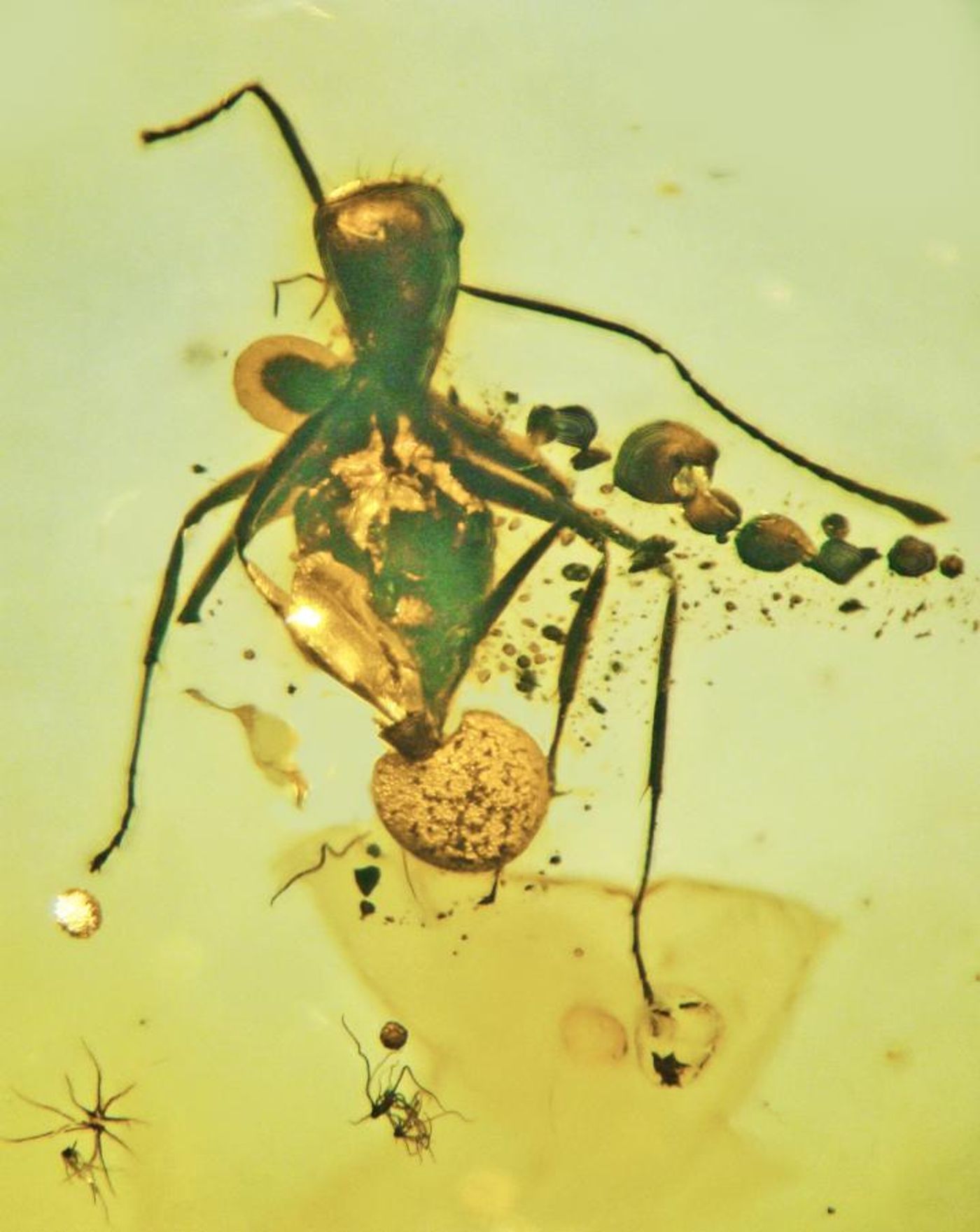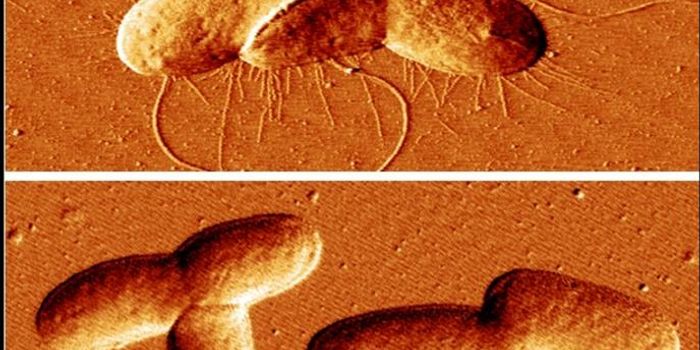New Species of Fungi Found Growing From Ancient Ant
Seen in the image below, scientists have discovered an unusual specimen of fungus that made a carpenter ant its home; this discovery is the oldest known ant fungal parasite, which is also a new genus and species. The new species has been named Allocordyceps baltica; it was found in an ant that was preserved in amber about 50 million years ago in the Baltic region of Europe. The findings have been reported in Fungal Biology.
The mushrooms of many fungi function as the organisms' reproductive structure and often bear spores. "It's a mushroom growing out of a carpenter ant," stated George Poinar Jr. of Oregon State University, who is the author of the 1991 book The Quest for Life in Amber and who helped inspire Jurassic Park by Michael Crichton.
Some parasites can infect host species and cause changes in the hosts' behavior. Sometimes those behaviors are very advantageous for the parasite but not so good for the health of the host.
"Ants are hosts to a number of intriguing parasites, some of which modify the insects' behavior to benefit the parasites' development and dispersion," explained Poinar. "Ants of the tribe Camponotini, commonly known as carpenter ants, seem especially susceptible to fungal pathogens of the genus Ophiocordyceps, including one species that compels infected ants to bite into various erect plant parts just before they die."
The ants are then in a good position to allow fungal spores to be distributed from the ascomata, or the fruiting part of the fungus, which might protrude from the head and neck of the infected ant. The ascomata can then release fungal spores into the area around ant nests, which are typically in rotting logs, stumps, or trees.
"We can see a large, orange, cup-shaped ascoma with developing perithecia - flask-shaped structures that let the spores out - emerging from the rectum of the ant," Poinar said. "The vegetative part of the fungus is coming out of the abdomen and the base of the neck. We see freestanding fungal bodies also bearing what look like perithecia, and in addition, we see what look like the sacs where spores develop. All of the stages, those attached to the ant and the freestanding ones, are of the same species."
This new genus and species has some characteristics in common with Ophiocordyceps but also undergoes developmental stages that have not been observed before this, Poinar said. Ascomata in the genus Ophiocordyceps are known to infect ants, but they usually erupt from the head and neck and not the rectum, noted Poinar.
"There is no doubt that Allocordyceps represents a fungal infection of a Camponotus ant," he said. "This is the first fossil record of a member of the Hypocreales order emerging from the body of an ant. And as the earliest fossil record of fungal parasitism of ants, it can be used in future studies as a reference point regarding the origin of the fungus-ant association."
Sources: AAAS/Eurekalert! via Oregon State University, Fungal Biology










